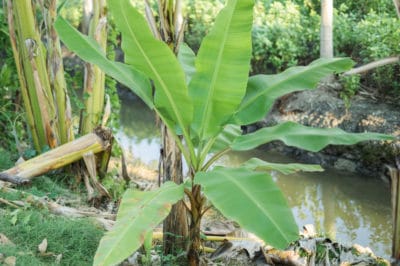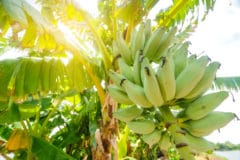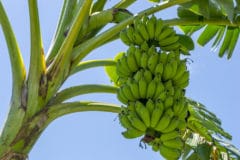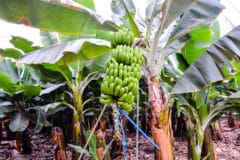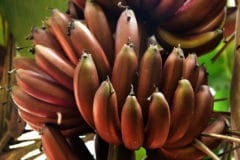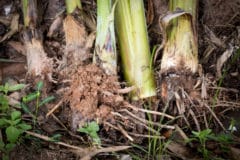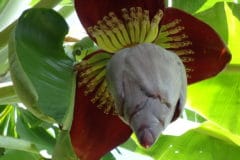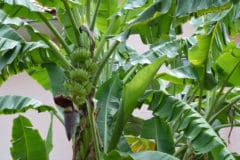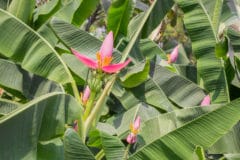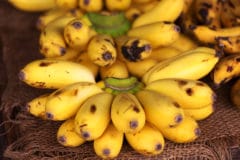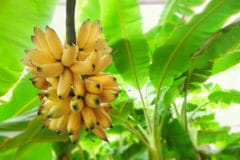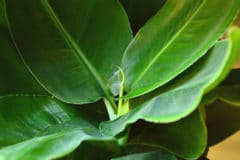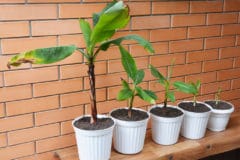Banana Plant Basics
The banana – though often called a tree – is actually a perennial shrub in the same family as ginger. What looks like a trunk is the central stem, made up of a tightly-packed whorl of leaves, from which the flower cluster and banana fruits develop. Like many perennials, bananas develop new plants at the base and when the mother plant dies, these offsets become new banana “trees.”
Different Kinds of Bananas
The banana family is large and includes edible as well as strictly ornamental families. Among them are:
- Dwarf Cavendish – most common commercial banana.
- Lady Finger – smaller but sweeter version of the supermarket variety.
- True plantains – Africa origin; eaten after cooking.
- Musa balbisiana – wild banana, multiple seeds.
- Ornamental bananas – often seeded, includes musa acuminata, musa basjoo and others.
Where Bananas Grow
Edible bananas, including the cooking varieties called plantains, can often be grown outdoors in USDA Zones 7 to 11. Most are fairly large plants, too large for growing indoors, and over time will develop into a small grove. Ornamentals also have a fairly wide range and some can be grown indoors. However, the grocery store fruit is a true tropical plant.
Growing Bananas From Seed
Banana seeds are available from some seed houses and growers. Although they may produce edible bananas, they will not be the grocery variety. Soak seeds 24 to 48 hours. Use a well-draining soil mix and heat mat for a few hours a day (not all day) to keep the seeds warm. Soil should be damp but not wet. Germination may take up to six months or more.
Growing Bananas From Divisions
Bananas have underground rhizomes like iris plants and other perennials. You can grow new plants by dividing the rhizomes. The growth points on the rhizomes are known as meristems and each piece you plant must contain at least one. Plant the rhizome in rich, well-drained potting soil and keep moist and warm. It takes about two years for a plant to develop.
Growing Bananas with Suckers
Bananas produce two kinds of suckers – sword suckers and water suckers. Sword suckers, which have straight, thin leaves, produce better plants. Remove the sucker with a sharp, clean knife and repot in fresh potting soil at the same level. Keep soil moist but not soggy. Bright indirect light or dappled shade and warmth are also required for best growth.
